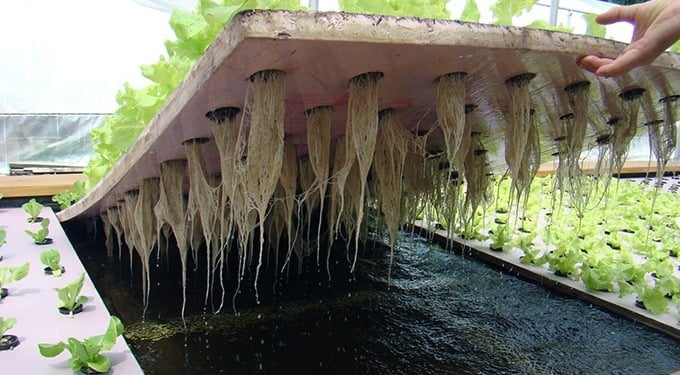Deep Water Culture (DWC) Hydroponics: Nurturing Crops in the Aquatic Realm
Informational 0 CommentsWarning: Trying to access array offset on value of type null in /home/59053787/domain/public_html/wp-content/themes/simple-east/content.php on line 37
In the quest for innovative and sustainable farming methods, hydroponics has emerged as a game-changer. Among the diverse hydroponic techniques, Deep Water Culture (DWC) stands out for its simplicity, resource efficiency, and ability to deliver remarkable plant growth. In this article, we’ll dive into the world of Deep Water Culture hydroponics, exploring its mechanisms, benefits, challenges, and its potential to revolutionize the future of agriculture. For more information regarding hydroponic plant one can visit our site https://hydroponicglobal.com.au/.
Understanding Deep Water Culture (DWC)
Deep Water Culture, often referred to as the “floating raft” system, is a hydroponic method that suspends plant roots in a nutrient-rich water solution. Unlike traditional soil-based farming, DWC systems provide plants with direct access to water and essential nutrients, creating an oxygen-rich environment for robust root development.
Key Components of DWC Hydroponics
A typical DWC system consists of several essential components:
- Reservoir: This is a container that holds the nutrient solution. It may be made of various materials, including plastic or fiberglass.
- Air Stones or Diffusers: Air stones or diffusers are submerged in the nutrient solution and connected to an air pump. They release oxygen bubbles into the solution, ensuring adequate oxygenation for plant roots.
- Net Pots or Containers: Plants are grown in net pots or containers filled with a growing medium. The net pots are placed on a floating platform that rests on the nutrient solution.
- Air Pump: An air pump provides continuous oxygenation to the nutrient solution. It is a critical component for maintaining healthy root systems.
- Water Pump (optional): In some DWC systems, a water pump may be used to circulate the nutrient solution, ensuring even distribution of water and nutrients.
The DWC Hydroponic Process
The operation of a DWC system follows a straightforward cycle:
- Nutrient Solution: The nutrient solution, composed of water and essential nutrients, is prepared and placed in the reservoir.
- Oxygenation: Air stones or diffusers connected to an air pump release oxygen bubbles into the nutrient solution. This oxygenation is essential for root health and preventing root suffocation.
- Floating Platform: A floating platform, often made of foam boards or rafts, rests on the nutrient solution’s surface. Net pots containing the plants are positioned on the platform, allowing their roots to dangle into the solution.
- Plant Growth: As the plants grow, their roots extend into the nutrient solution. They absorb water and nutrients directly from the solution while being constantly oxygenated by the air stones or diffusers.
- Monitoring: Growers regularly monitor the nutrient solution’s pH levels, nutrient concentration, and temperature to ensure optimal growing conditions.
Advantages of DWC Hydroponics
DWC hydroponics offers numerous advantages, making it an attractive choice for modern agriculture:
- Water Efficiency: DWC systems are highly water-efficient, as water is continuously recirculated and absorbed directly by plant roots, minimizing waste.
- Nutrient Control: Growers have precise control over the nutrient composition and concentration in the solution, optimizing plant growth and crop quality.
- Resource Conservation: By recycling nutrient solution and minimizing water usage, DWC hydroponics conserves valuable resources and reduces environmental impact.
- Rapid Growth: Plants grown in DWC systems often experience accelerated growth rates and higher yields due to the optimal access to water, nutrients, and oxygen.
- Reduced Pest and Disease Risk: Soilless cultivation minimizes the risk of soil-borne pests and diseases, reducing the need for chemical pesticides.
- Space Efficiency: DWC systems are space-efficient and adaptable to various settings, making them suitable for urban agriculture and vertical farming.
Applications of DWC Hydroponics
DWC hydroponics finds applications across a wide range of agricultural practices, including:
- Greenhouse Cultivation: DWC systems are well-suited for greenhouse growing, allowing for precise control over growing conditions and resource efficiency.
- Indoor and Vertical Farming: These systems are ideal for controlled environments like greenhouses and indoor farms, maximizing space and resource efficiency.
- Urban Agriculture: The space-efficient nature of DWC systems makes them suitable for urban agriculture initiatives, enabling food production in non-traditional settings.
- Commercial Horticulture: Commercial nurseries and growers use DWC systems to optimize crop production and quality.
- Research and Education: DWC hydroponics is commonly used in research and educational settings to study plant growth, nutrient management, and hydroponic technology.
Challenges and Considerations
While DWC hydroponics offers numerous benefits, it also presents certain challenges:
- Technical Expertise: Operating a successful DWC system requires knowledge of plant nutrition, pH management, system maintenance, and troubleshooting. Skilled labor is essential.
- Initial Investment: Setting up and maintaining DWC systems, especially on a commercial scale, can be costly. However, long-term savings in water and increased yields often justify the expense.
- Crop Selection: Not all crops are well-suited for DWC systems. Leafy greens, herbs, and some vine crops tend to thrive, while larger-rooted vegetables and fruit trees may be less practical.
The Future of DWC Hydroponics in Agriculture
As global challenges related to water scarcity, resource efficiency, and population growth intensify, DWC hydroponics stands at the forefront of sustainable agriculture. Continued advancements in technology, increased accessibility for small-scale growers, and greater awareness of its benefits will likely drive its expansion.
In conclusion, DWC hydroponics represents an innovative and efficient approach to agriculture. By maximizing resource efficiency, reducing environmental impact, and promoting rapid and healthy plant growth, these systems offer a promising path toward a more sustainable and food-secure future. As we confront the challenges of feeding a growing global population while safeguarding our planet, DWC hydroponics stands as a symbol of innovation and efficiency in agriculture.
Warning: Trying to access array offset on value of type null in /home/59053787/domain/public_html/wp-content/themes/simple-east/content.php on line 74
